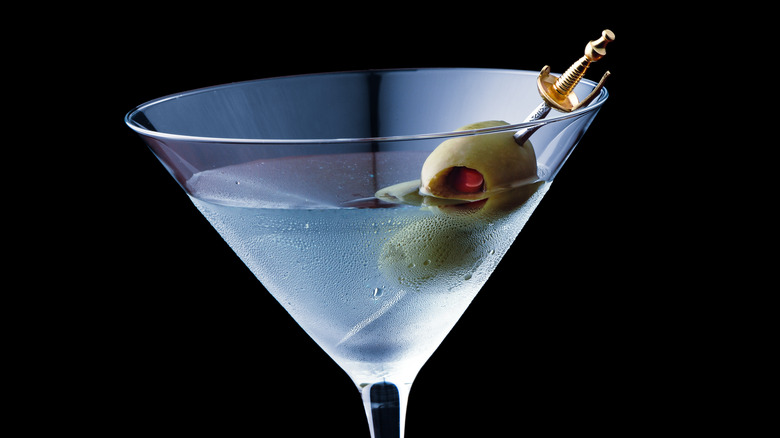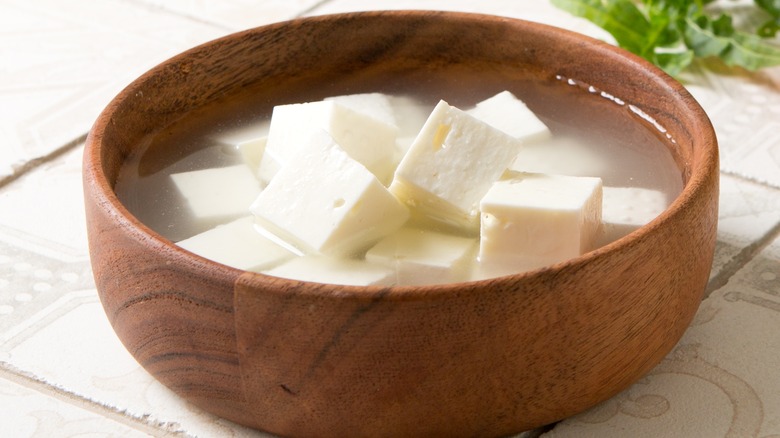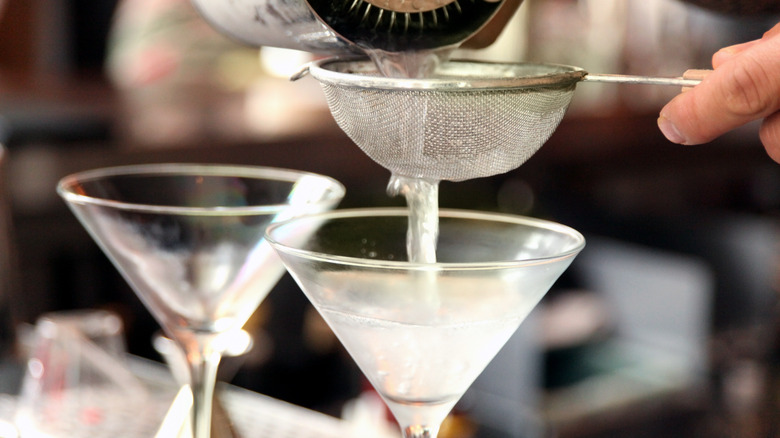Dirty Up Your Martini With Feta Brine For A Smoother Sip
There are so many forms of martinis now, we almost need a reminder of the classic version. What began as a simple combination of crisp, cold gin and vermouth with a garnish or twist, has evolved into an increasingly eclectic blend of ingredients combined and added to a martini glass. To pay homage to an original, many people embrace the dirty martini, which is simply that traditional blend of gin and vermouth dirtied by olive brine.
It's no secret that with a limited ingredient list, one addition or swap can make a huge difference in the flavor of the drink. That can result in an unintended surprise or be a conscious flavor combination. In the case of the dirty martini, stirring it up sans olive brine leaves room for another flavor — feta brine. While the ingredient swap is slight, especially since they are both brines, feta brine delivers a much subtler finish than the sharp tanginess of olive brine. Next time you're craving a simple, clean cocktail, this combination might whet the palate in new and unexpectedly delightful ways.
Why feta brine?
It may seem like a long jump between the iconic green olive brine the drink is associated with and a cheese brine, but in reality they are closer than you think. First off, bartenders have been garnishing martinis with cheese-stuffed olives for a long time, so making the stuffing the headliner isn't much of a stretch.
Plus, feta got its start in Greece around 8,000 years ago. Remember, this is the same Mediterranean region that's known for olives, so it's a long-standing marriage in the culinary world. The fact that feta and olives play off each other so well in culinary delights like feta and kalamata salsa and penne with black olives, sun-dried tomatoes, and feta means it's no surprise they can substitute for each other too.
In the case of the martini, swapping the olive brine for feta brine brings an unassuming, softer essence to the glass. In addition, it sustains the expectation of a murky presentation with its fat-infused milky goodness. The flavor profile of feta brine still delivers on the salty touch the classic is known for, and pairs well with the juniper-foundation of gin in the same way olive brine does. Then there's the obvious fact that wine and cheese are a marriage made in heaven, so the creamy essence of feta brine merges with vermouth — a wine fortified with brandy, herbs, and botanicals — flawlessly.
Feed the creativity
Mixology is a fun but serious endeavor to explore different flavors and get creative with different combinations. Even something as simple as a three-ingredient martini can take as many shapes as The Wonder Twins. When you're standing at your home bar deciding what to put in the glass, reach for either gin or vodka. Where vodka is happy to take a back seat to other flavors, gin can't help but introduce its botanical character, so they each contribute a different profile. Similarly, you can also explore the flavors of different vermouths.
The composition of your martini is also highly dependent on how boozy and briny you make it. Curate your version of this classic by experimenting with the vermouth/liquor ratio. The classic recipe is typically one part vermouth to four parts gin, depending on how wet (vermouth forward) or dry (spirit forward) you like it. You can include even less vermouth in favor of more feta brine if you want to showcase that flavor instead. If you're feeling adventurous, try dill pickle brine for an identifiable tanginess, spice it up with pickled jalapeño brine, or reach for punchy caper brine.
Some days are made for hot and dirty martinis, while some meld with the best classic martini recipe, and some are just perfect for James Bond's vesper martini. All we know is martinis are here to stay, so order up a feta brine martini, or impress your friends by creating your own variation at home.


